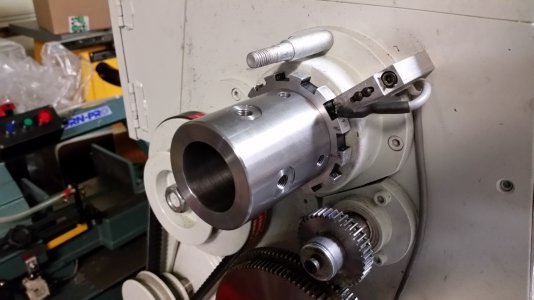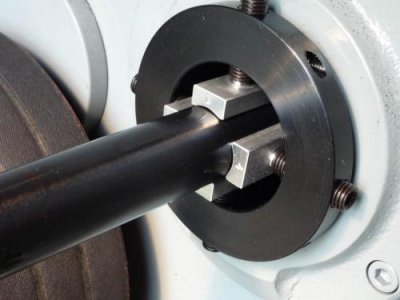- Joined
- Apr 12, 2013
- Messages
- 562
No, not that kind...
This should allow me to dial in rifle barrels for muzzle threading. I've got 2 AR's that could use this treatment, and a couple of other rifles that might want to wear a can eventually.
The 4 set screws will be removed normally, to allow free feeding of long stock and my drawbar. This replaced the normal spindle bearing preload collar. 1.25"x20TPI. Yes, that is not a typo. The first step was to cut a thread gauge that matched the spindle threads so I would know when the interior threads were complete. Then take a piece of DOM tubing of appropriate size and start turning. My second set of interior threads...lots easier now.
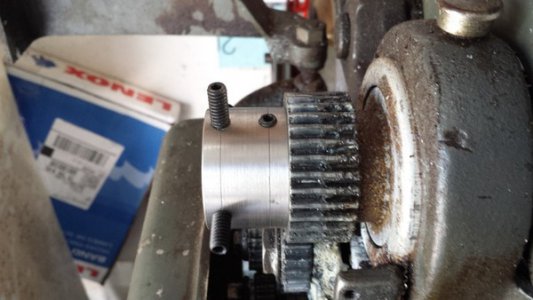
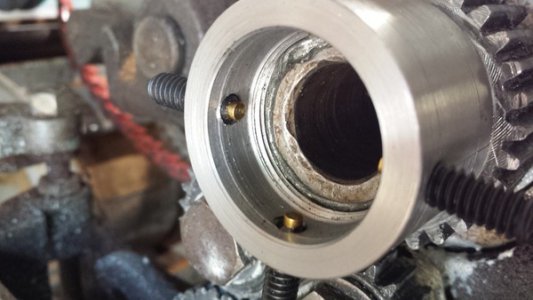
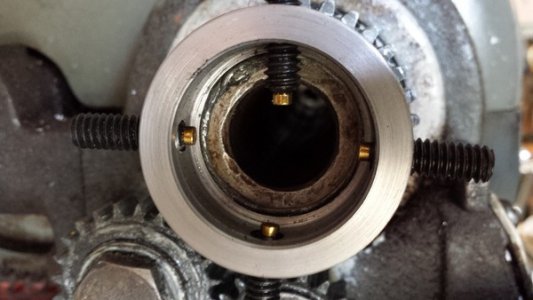
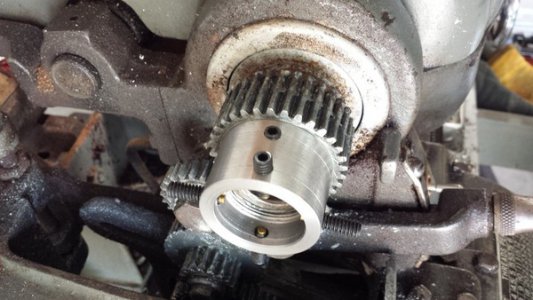
This should allow me to dial in rifle barrels for muzzle threading. I've got 2 AR's that could use this treatment, and a couple of other rifles that might want to wear a can eventually.
The 4 set screws will be removed normally, to allow free feeding of long stock and my drawbar. This replaced the normal spindle bearing preload collar. 1.25"x20TPI. Yes, that is not a typo. The first step was to cut a thread gauge that matched the spindle threads so I would know when the interior threads were complete. Then take a piece of DOM tubing of appropriate size and start turning. My second set of interior threads...lots easier now.






